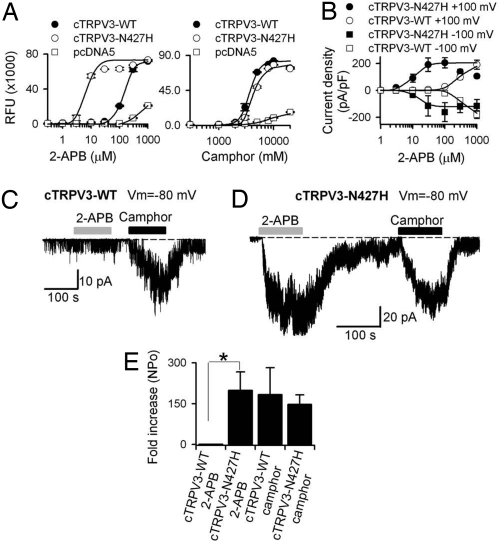Fig. 3.
N427H mutation restores 2-APB sensitivity of chicken TRPV3. (A) Concentration-response curves of 2-APB and camphor in chicken wild-type TRPV3, cTRPV3-N427H, and pcDNA on FLIPR. Error bars are SEs; n = 6 for each clone. (B) Whole-cell patch-clamp current-density concentration-response curves of 2-APB-activated currents in HEK293 cells transfected with wild-type or N427H mutant chicken TRPV3 at +100 and −100 mV. Error bars are SEs; n = 4 for wild-type chicken TRPV3; and n = 5 for cTRPV3-N427H mutant. (C) Inside-out single channel recordings of wild-type chicken TRPV3 treated with 25 μM 2-APB or 3 mM camphor. (D) Single channel current traces (inside-out configuration) of cTRPV3-N427H channel treated with 25 μM 2-APB or 6 mM camphor. (E) Average fold increase of single channel activities over basal levels evoked by 2-APB or camphor in inside-out patches expressing wild-type cTRP3 or cTRPV3-N427H mutant (*, P < 0.05, Student's t test; n = 4 for wild-type cTRPV3; and n = 5 for cTRPV3-N427H mutant).

